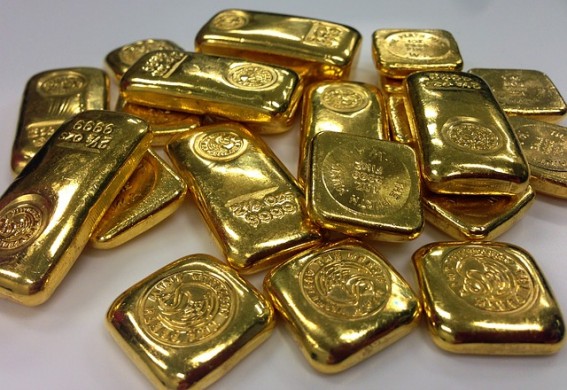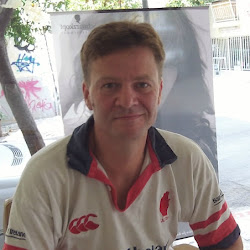Goldplat plc, the AIM listed gold producer, has released interim results for the six months ended 31 December 2013.

Overview:
– Focussed on restructuring Goldplat’s gold recovery and mining business in Africa to be profitable in the changed economic environment
– Weak gold prices impacted revenues for the period, but cost control measures across operations expected to improve revenues for H2 FY 2014
– First secondary gold producer in South Africa to obtain accreditation as a ‘Responsible Gold’ producer – opportunity for competitive advantage
– Examining Joint Venture opportunities to redevelop Kilimapesa gold mine in Kenya subject to proposed Kenyan legislation
Chairman’s Statement (In Full):
Our portfolio of assets consist of our primary market leading gold recovery operations in South Africa and Ghana, and three gold exploration and development mining assets in Kenya, Ghana and Burkina Faso.
This has been a difficult period for the Company as we have adapted to the substantial reduction in the gold price experienced during the period under review. Goldplat’s income is dominated by the sale of gold. The gold price for the six months ended 31 December 2012 averaged almost US$1,700/oz and for the whole of the year ended 30 June 2013 approximately US$1,600/oz. For the six months ended 31 December 2013 however the price averaged some US$1,300/oz. It follows that the same volume of gold sales would result in income of some US$300/oz less than for FY 2013.
Goldplat’s exposure to the gold price is mitigated by the fact that it can, and does, adjust the price of gold bearing material it purchases, thus putting it at an advantage compared with a mine reliant on a finite orebody. However, this mitigation is not immediate in effect, as the Group tends to be processing stockpiles purchased some time previously. Furthermore the major part of Goldplat’s costs are processing costs which do not vary with the gold price, rather tending to increase with inflation. In South Africa and Ghana the reduction in the local currencies has helped, but the main factors in the improving trading position are the cost control measures introduced by management.
Coupled with the recent strengthening in the gold price, these measures reinforce the statement contained in the last annual report, that, while the first half was a difficult trading period, we expect improvements to show in H2 2014.
We have implemented a number of initiatives to improve processing costs and efficiencies, and in turn profitability. We obtained certification as a ‘Responsible Gold’ producer at our South African recovery operation, a major achievement which gives us an advantage over our competitors and which, we believe, will lead to increased business. During the accreditation process, however, our ability to produce gold from by-products was impacted by deliveries from major suppliers awaiting the completion of the accreditation process, and this reduced production for the first half year.
In addition, in line with our longer-term growth strategy we continue to evaluate opportunities for expanding our gold recovery operations in Africa and more specifically in Burkina Faso; however in the near-term we remain focussed on the operational profitability and success of our South African and Ghanaian operation before making such expansion moves.
We are also reviewing different options to monetise our gold exploration and development mining assets in Kenya, Ghana and Burkina Faso, be it through sale, development or joint venture opportunities. These projects were de-prioritised last year in order to stem losses and allow us to focus on building our revenue generating recovery operations.
With the above developments in mind, our first half results are below those of the six months ended 31 December 2012, resulting in an operating loss of £694,000 (2012: profit £2,057,000) and a loss before tax of £912,000 (2012: loss after impairment charge £814,000.) However, as noted, the second half of the year is already performing more strongly and we expect, in line with market expectations, to return to profitability by the year end.
Gold Recovery Operations:
Our market leading gold recovery operations in South Africa and Ghana recover gold from by-products of the mining process, such as woodchips, mill liners, fine carbon, slags, sludges and waste grease. In addition to generating revenues from gold sales from concentrates produced for the Company, our recovery services also provide an economic method for mines to dispose of waste materials while at the same time adhering to a mine’s environmental obligations. Our operations boast a substantial blue-chip supplier base from which we purchase mining by-products from which to recover gold, and also includes a mix of local producers and artisanal (primarily) in Ghana, West Africa where there is an active presence.
Goldplat Recovery (Pty) Limited – South Africa (‘GPL’):
We were delighted to announce in December 2013 that we had been accredited as a Responsible Gold depositor in line with international guidelines. The accreditation was a major achievement for the Company and accounts for gold produced, which follows the ‘Chain of Custody’ requirements consistent with the Organisation of Economic Co-operation and also adheres to the London Bullion Market Association’s ‘Responsible Gold Guidance’ and the World Gold Council certification of ‘Conflict-Free’ gold. Notably, we are the first secondary gold producer in South Africa to obtain this status, and we believe that with this accreditation in hand we offer a unique selling position that significantly differentiates us from competitors. We believe that as a ‘responsible gold’ depositor and gold recovery services business, our business offering is enhanced and has the potential to positively impact future contracts, profits and cash flows for GPL. During the due diligence period for gaining ‘Responsible Gold’ accreditation, Goldplat was limited in accepting by-products from suppliers nor could concentrates be sent for further processing until accreditation was achieved, which resulted in a reduction of gold sales during H1 2014. By-products and concentrates are now being delivered and revenues from by-product sources are expected to return to its usual levels in second half of FY 2014.
As previously highlighted, we have implemented a number of changes at GPL focussed on adapting to the current suppressed gold price environment. To help mitigate the decrease in the gold price and boost operating margins, we have focussed on revising our by-product procurement contracts and cancelling lower grade by-product contracts with existing suppliers.
Additionally, as previously announced, we have agreed to purchase cyanide direct from local suppliers in liquid form rather than importing in briquette form, and to automate the dosing system in order to reduce costs. Since October 2013, we have achieved major cost savings in cyanide consumption and will increase these savings further by converting the plant to liquid cyanide supply during H2 2014. These actions have improved margins and will result in an increased overall yield going forward.
We are also looking to increase our by-product processing throughput at GPL to help increase production. In line with this, small sections of the plant, previously run on a single shift system for security reasons, will be run on 24 hour shifts to increase production, and additional security measures will be taken. This will be effective from April 2014.
To provide a source of high grade material for processing at our main plant in Benoni, Johannesburg, we obtained the right to mine ore from Central Rand Gold’s (‘CRG’) Crown East No 4 shaft.
Mining is undertaken by a third party contractor. This small scale operation has been operating profitably for the reporting period under review and we intend to continue the development and opening up of this project.
This constant investment in our recovery operations underpins our commitment to ensuring we maintain a competitive service offering and stronghold on gold recovery in the area at GPL. The current depreciation in the South African Rand versus the US Dollar we believe will help to mitigate against the lower gold price environment in the H2 2014. Nonetheless, with more favourable exchange rates, renegotiated and more cost-effective contracts, and more streamlined operations, we are confident that the operational and trading outlook for the second half of FY 2014 looks much stronger.
Gold Recovery Ghana Limited – Ghana (‘GRG’):
GRG’s gold recovery operation, which enjoys a tax free status until 2016, is located in the free port of Tema in Ghana. Our GRG recovery operation is similar to our mature South African recovery plant as it processes by-products from the primary mining process. However, it has additional upside potential through processing artisanal tailings that it processes due to West Africa’s active artisanal mining presence. Whilst GRG benefitted from a reduction in the value of the Ghana Cedi, which has helped offset the recent lower gold price environment, it still sustained marginal pressures, which impacted profitability during H1 2014. However, in line with actions undertaken by the Board, during the latter part of H1 2014 and the second half of the year to date GRG has been performing well.
As we have previously defined, GRG has three main profit centres. The first of these is GRG’s agreement with Endeavour Resources (‘Endeavour’) where tailings purchased by GRG from artisanal and small scale miners are processed by Endeavour. As highlighted in our operational and trading update on 17 January 2014, we had experienced difficulties in procuring tailings at a commercial rate from artisanal and small scale miners due to high material prices and an increase in transport costs. However we introduced measures to mitigate these factors by sourcing higher grade material closer to Endeavour’s Nzema plant to reduce the transport costs, and by engaging with the Ghana Small Scale Mining Association to assist in our procurement programme and ensure that acceptable practices are adhered to. The Government has also acted to curtail unlawful trading activities that have been sustained during the period.
While challenges remain, procurement prices have substantially improved and tonnage production has increased, which should help to significantly enhance trading in the second half of the financial year (‘H2 2014’).
GRG’s second profit centre is the carbon-in-leach section (‘CIL’) at Tema. After the initial decision to close the CIL section in FY 2013, due to margin pressures sustained
from procurement of sustainable by-products, GRG has begun to re-treat the tailings dam on site through the CIL circuit and is currently running at a profit.
Goldplat’s third profit centre at GRG is its incinerator section, which recovers high-grade gold from fine carbon and rubber mill liners from blue-chip mining clients. It is our intention to significantly grow this profit centre. During the first half of FY 2014 (‘H1 2014), several new clients were successfully contracted to procure fine-carbon and rubber mill liner by-products, and existing contracts were renewed on more favourable terms. As a result we have managed to increase our fine carbon business at GRG, which we expect to maximise production and profitability with the commissioning of an additional incinerator plant in H2 2014.
We also remain confident that we can expand the benefits gained from GRG’s tax free status by acquiring material from the rest of Africa and even outside Africa, and this process has already commenced.
Burkina Faso: Midas Gold SARL (‘Midas’):
The Company intends to extend its gold reprocessing operations into Burkina Faso under the name of Midas. The Environmental Study for the site in Dano was completed at the end of August 2013, and the operating licence, expected to be in place by the end of 2013, has not yet been granted by the Government.
Mining and Exploration:
A strategic review was undertaken during 2013, which analysed Goldplat’s main value drivers, growth potential and centres of profitability. As a result of this we have de-prioritised our exploration and development assets, in order to stem losses and focus in the near-term on our growing, cash generative, niche gold recovery business.
In regards to our two greenfield gold exploration projects, which include the 29 sq km Anumso Gold Exploration licence located in the Amansie East and Asante Akim South Districts of the Ashanti Region in Ghana, and the 246 sq km Nyieme project in the prospective Birimian Greenstone Belt in southern Burkina Faso, we are continuing to evaluate opportunities to realise value or monetise these projects either through joint ventures or trade sales. We will update the market on these developments in due course.
Kilimapesa Gold – Kenya:
Goldplat’s wholly owned Kilimapesa gold mine is located in the historically productive Migori Archaean Greenstone Belt in western Kenya. Kilimapesa has a
mineral resource of 8,715,291 tonnes at 2.40 g/t Au for 671,446 oz Au at a cut-off of 1 g/t.
The Kilimapesa mine is still operating at reduced levels to defray costs. Kilimapesa continues to suffer losses, but, despite the lower gold price, the losses are at a much reduced rate.
The Board is currently evaluating its options for the future of Kilimapesa. New Kenyan legislation, which is expected to be published soon, will clarify rules for local participation. A recovery plan, which takes into account the expected local participation rules, has been submitted to the Government. The Company is talking to potential joint venture partners to carry the capital costs for expansion. The Government has been supportive and has been willing to assist in this process.
Board Changes:
The half year to 31 December 2013 saw substantial changes to the constitution of the board of directors. On 16 September 2013 it was announced that Russell Lamming had stepped down from his position as CEO and that Ian Visagie take over with immediate effect.
In December 2013 the management in Johannesburg was strengthened by the appointment of Hansie van Vreden as an Executive Director. Hansie is a metallurgist who has already brought a new enthusiasm to the reprocessing business.
Also in September Nigel Wyatt joined the board as a non-executive director. Nigel is a mining engineer who has a wealth of experience in African mining. Finally, on 31 December Bob Pitts Smith reached his planned retirement date and stepped down from the Board, and Hansie van Vreden was appointed Chief Operating Officer.
Share Options:
On 1 July 2013 there were 21,200,000 share options outstanding. Of those, 4,500,000 were held by Russell Lamming, part of a grant of 13,500,000 exercisable at 12.825p per share. The arrangements under which Mr Lamming stepped down as a director provided for him to retain the 4,500,000 options which had already vested, but cancelled the balance of 9,000,000 options.
The other 16,700,000 were exercisable up to 31 December 2013. Of those options 3,000,000 were held by key personnel at subsidiary level and, at the request of the holders, the date for exercise was extended to expire on 30 August 2018. The 13,700,000 options held by directors and former directors lapsed.
Outlook:
Our recovery operations in both South Africa and Ghana are currently trading profitably and at a rate which should more than eliminate the first half trading loss. We also expect to be in a position to continue paying dividends.
Brian Moritz
Chairman
10 March 2014

 Hot Features
Hot Features













